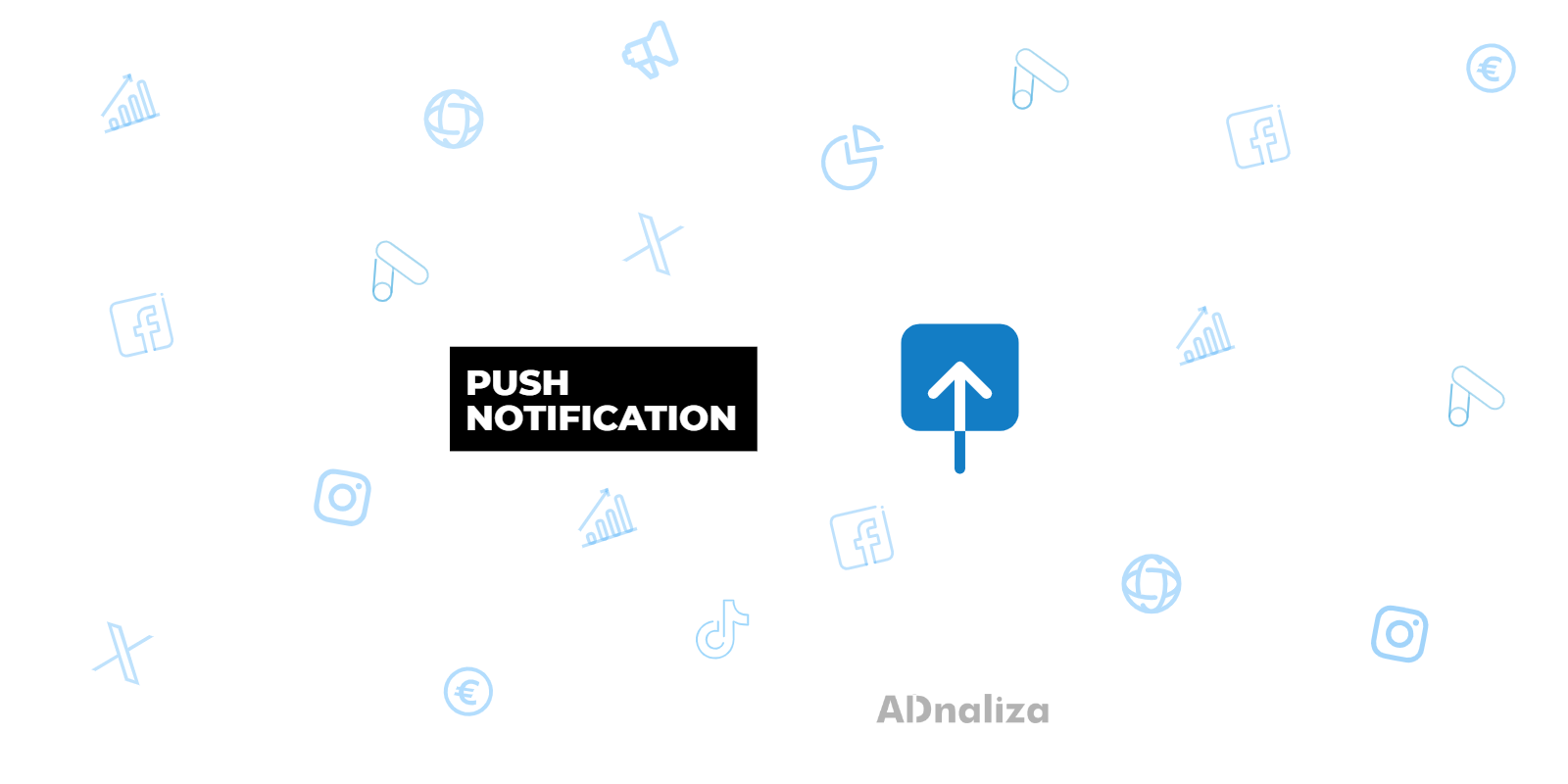
Definition:
Push notifications are messages that are sent directly to a user's device (such as a smartphone, tablet, or PC) from an app or web page. Unlike emails or text messages, push notifications appear directly on the device's screen, allowing for immediate interaction.
These notifications can be of various types, including news alerts, event reminders, promotional offers, app updates, and more. They are used in a variety of contexts, but in digital marketing, they are a powerful tool for keeping users engaged and informed.
In order for a user to receive push notifications, they must first give consent. This is usually done through a pop-up message that asks the user to allow or block push notifications from an app or web page. Once the user has given their consent, they can start receiving push notifications.
Push notifications are sent from a server to users' devices. When an app or webpage wants to send a push notification, it sends a request to the server with the message and device information to which it should be sent. The server then sends the notification to the device, which displays it on the screen.
Push notifications are an extremely valuable digital marketing tool. Here are some of the benefits they offer:
To get the most out of push notifications, it's important to follow some best practices. First, user consent must be obtained before sending push notifications. Sending notifications to users who haven't accepted them can result in a poor user experience and low engagement rate.
In addition, it is important to customize push notifications for each user. This could involve sending messages based on the user's location, their behavior on the application or website, or their personal preferences and interests.
It is also crucial to send push notifications at the right time. Sending notifications at times when users are most active or more likely to interact can increase the rate of openness and engagement.
Finally, attention should be paid to the frequency of push notifications. Sending too many notifications can be annoying for users and lead them to turn off notifications or uninstall the app. On the other hand, not sending enough notifications can lead users to forget about the app or web page. Finding the right balance is key to the success of push notifications.
Despite their benefits, push notifications also present certain challenges. One of the main ones is the risk of saturation. If too many notifications are sent, or if the notifications are not relevant or useful, users may start ignoring them or may even turn them off. Therefore, it is crucial to make sure that push notifications are relevant, useful and not too frequent.
In addition, it is important to be aware of the privacy implications of push notifications. Since push notifications often involve the collection and use of personal data, it is crucial to handle this data responsibly and comply with all applicable privacy laws and regulations.
Finally, it is essential to measure and analyze the performance of push notifications. This may involve tracking metrics such as open rate, click-through rate, and conversion rate. Analyzing these metrics can help identify what works and what doesn't, and can provide valuable insights to improve future push notification campaigns.